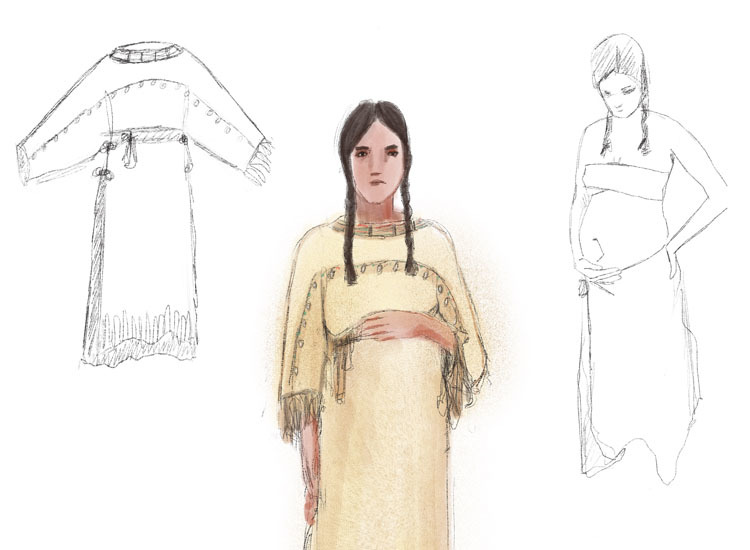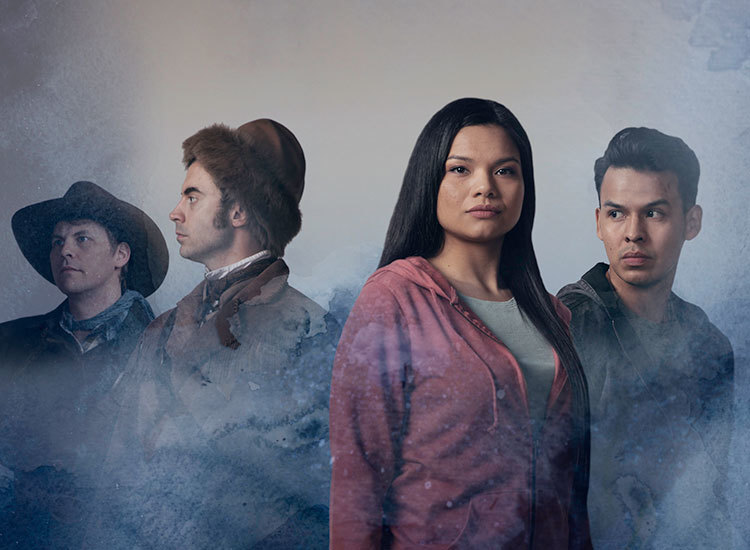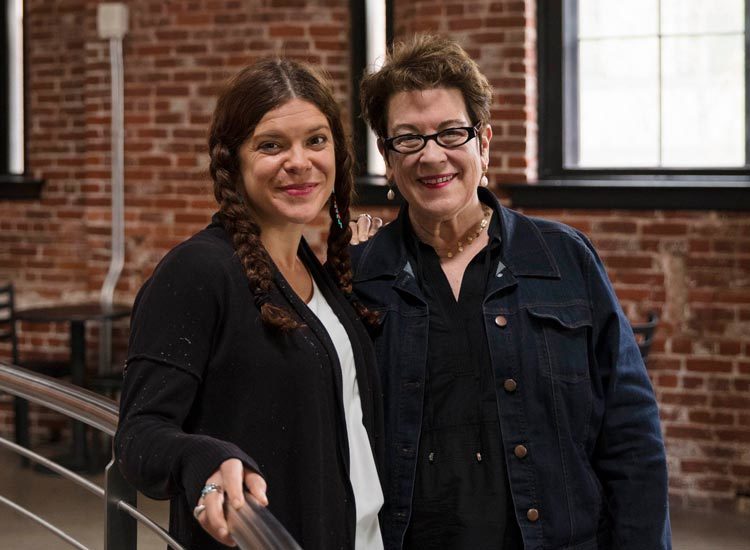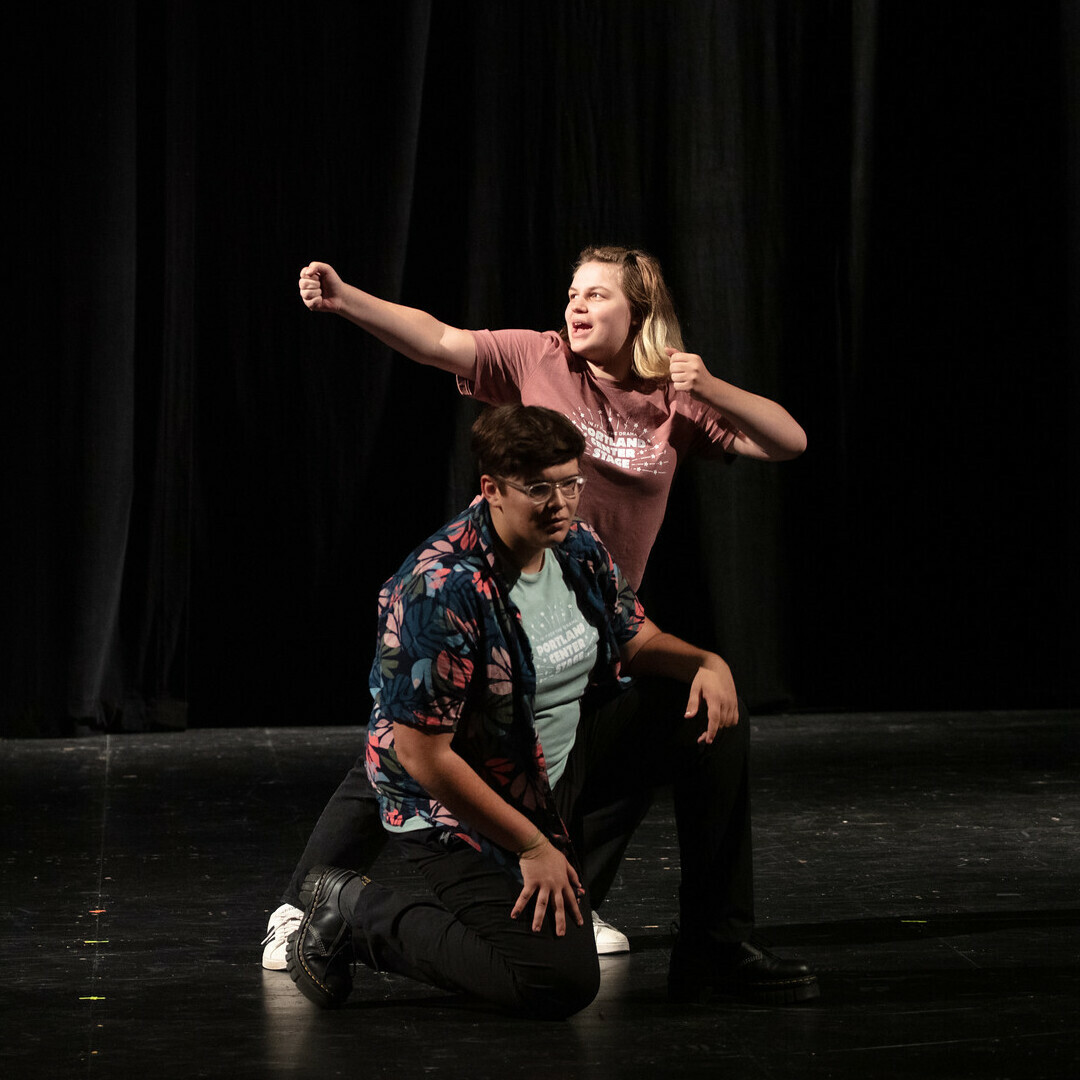The World of the Play: "Crossing Mnisose"
Beyond Playwriitng
Mary Kathryn joined Pipestem Law in 2015 from Quinn Emanuel Urquhart & Sullivan in New York City, where she specialized in complex commercial litigation related to structured finance, bankruptcy, and federal qui tam actions. She has drafted numerous appellate briefs in federal courts, including federal appellate courts and the United States Supreme Court.
Mary Kathryn has significant experience in briefing other issues of constitutional law related to federal Indian law, as well as cases that implicate statutory rights under Indian rights laws such as the Native American Graves Protection and Repatriation Act (“NAGPRA”). One of her assets is the depth of her trial work, as she has prepared for and litigated cases in the New York Supreme Court, United States Bankruptcy Court, and federal district courts across the country.
She is a frequent speaker at law schools and symposia on issues related to restoration of tribal sovereignty, tribal self-determination, Indian civil and constitutional rights, and safety of Native Women. She also represents the National Indigenous Women’s Resource Center (NIWRC) in support of the NIWRC’s work to end violence against Native Women. Mary Kathryn is an accomplished playwright who has written and produced several plays relating to Indians and the law, including Waaxe’s Law, Manahatta, My Father’s Bones (with Suzan Shown Harjo), Miss Lead, Fairly Traceable, and Sliver of a Full Moon.
Getting Involved: Unmasking the Hidden Crisis of Murdered and Missing Indigenous Women
Our playwright Mary Kathyrn Nagle demonstrated her activism this past March:
"A slate of Native women leaders will testify about the crisis of missing and murdered indigenous women. The witnesses include Sarah Deer, a citizen of the Muscogee (Creek) Nation who won a prestigious "genius grant" for her work to prevent violence against Native women. Also on the list is North Dakota State Rep. Ruth Buffalo, a citizen of the Mandan, Hidatsa and Arikara Nation who introduced legislation to address missing and murdered people in her state. at a hearing on Capitol Hill on Thursday.
Another expert appearing before the House Subcommittee for Indigenous Peoples of the United States is Mary Kathryn Nagle, a citizen of Cherokee Nation who has advocated for Native women at the U.S. Supreme Court. Also testifying is Tami Jerue, a citizen of the Anvik Tribe whose work at the Alaska Native Women’s Resource Center has helped spur action on missing and murdered indigenous women.
"Native women have continued to endure generations of systematic violence," Haaland, a citizen of the Pueblo of Laguna who is one of the first two Native women in Congress told leaders of the United South and Eastern Tribes as they met in Washington last week."
Historical Context
Who is the woman behind the stories?
"Since aiding Lewis and Clark on their famed 19th-century expedition across the West, this Shoshone heroine has become a symbol for everything from Manifest Destiny to women’s rights to American diversity. Does it matter that we don't seem to know that much about her?
So when U.S. government officials kept rejecting requests for public cash, Grace Hebard simply took matters into her own hands: In the spring of 1933, now in her seventies, Hebard shelled out $150 of her own money to round out a set of three historical markers up the road from Fort Washakie. The center monument honored the gravesite of Sacagawea, the fabled Shoshone interpreter who hiked with Lewis and Clark to the Pacific. The other two were for her sons: one for Bazil, and one for Jean-Baptiste, whose life began as a transcontinental papoose strapped to his mother’s back.
Hebard is the one who blew the Sacagawea story wide open, discovering the Native American guide had been buried right there on the Wind River Indian Reservation...Most researchers have reached the far less romantic conclusion that Sacagawea died there of typhoid fever in 1812, likely buried in an unmarked grave, dead without a name at 25.
An anonymous, premature death is at odds with Sacagawea’s modern-day status as an American icon. She’s inspired lesson plans, picture books, movies, and one-woman shows. In the 2006 megahit Night at the Museum, a life-size Sacagawea figurine is among the exhibit items in the Museum of Natural History that spring to life overnight. As one museum docent squealed, “She literally led these men across rivers, up mountains… She was the ultimate working mother!”...
And statues have popped up all over the country. In fact, the National Women's History Museum hazards that there may be more monuments honoring Sacagawea than any other woman in the United States. A bronze statue of her wading into the Pacific, as she might have done on the expedition, stands not far from her Wind River gravesite. You can also find her in Texas, Missouri, and the U.S. Capitol Building (repping North Dakota, not Wyoming). One statue of Lewis, Clark, and a kneeling Sacagawea even sparked protest in 2007, when feminists turned out with signs reading “SACAGAWEA NEVER COWERED.”
In 1803, President Thomas Jefferson bought a massive swath of land, now known as the Louisiana Purchase, off of Napoleon. The deal instantly almost doubled U.S. territory, extending it from the edge of Illinois up through most of Montana, and diagonally down to the lucrative port city of New Orleans. As he later wrote to his successor James Madison, Jefferson envisioned on this land an eventual “empire for liberty,” as if these two things might not be mutually exclusive.
The U.S. government knew little about the land, a rugged blob populated by Native Americans and fur trappers. Jefferson was eager to know what resources could be exploited by his newborn republic. So he sweet-talked Congress into budgeting $2,500 for an expedition from St. Louis to the Pacific Northwest and back to explore what, exactly, the country had bought.
Jefferson appointed his personal assistant Meriwether Lewis — a family friend who wasn’t yet 30 — to lead the journey. Lewis invited his old army buddy William Clark to serve as co-captain, and the two assembled a team of a couple dozen explorers to serve under them in the Corps of Discovery. The military party set off in the spring of 1804. So they journaled to keep close tabs on the people, flora, fauna, and terrain they came across. The combined, unabridged daily logs of the captains and four of their men topped a million words.
The Corps of Discovery decided to spend their first winter upstream from Illinois territory, near Hidatsa and Mandan country, in present-day North Dakota. That’s when they met a French-Canadian fur trapper in his forties named Toussaint Charbonneau, whom Lewis once described as “a man of no particular merit.” With him were his two Shoshone “wives”: Otter Woman and Sacagawea, who was probably about six months pregnant. The girls were around 16 years old, and had been sold off to Charbonneau after being kidnapped as children by the Hidatsa as the spoils of intertribal war.
Sacagawea and Charbonneau joined their new co-workers at the finished encampment called Fort Mandan. It speaks to Sacagawea’s intelligence and language skills that she was chosen for the job over his other wife, Otter Woman, even though it would mean bringing a screaming infant along for the ride. Sacagawea gave birth to her healthy baby boy on Feb. 11, 1805.
News of the expedition’s success was an instantaneous media sensation for the time. Jefferson really milked the political victory the success had earned him, and Lewis and Clark were lauded as heroes. Edited and abridged versions of the expedition journals were published shortly after the trip. Historians latched onto the American Odyssey as soon as their boots hit the dock.
But none of them wrote about Sacagawea. Not for nearly 100 years.
Sometime around 1900, a woman named Eva Emery Dye was on the hunt for a heroine. Dye was an amateur historian who served as chair of her local chapter of the Oregon Equal Suffrage Association. At the time, many women’s rights activists focused on highlighting women’s overlooked contributions to the country’s past as a way to show that their voting rights were long overdue. So Dye began retracing women’s steps over the historical record to find a worthy protagonist...
In 1902, Dye published a sensational book. The Conquest: The True Story of Lewis and Clark introduced an intriguing new character into an already well-known American epic, performing feats that only a woman could. Years later, Dye described how she made Sacagawea a star: “I traced down every old book and scrap of paper. ... Finally, I came upon the name of Sacajawea and I screamed, ‘I have found my heroine.’ I then hunted up every fact I could find about Sacajawea. Out of a few dry bones I found in the old tales of the trip I created Sacajawea and made her a real living entity.
Dye’s timing was just right. Plans were already underway for the Lewis and Clark Centennial Exposition in 1905, a world fair that would put Portland, Oregon, on the map. That summer and fall, nearly 1.6 million visitors turned up to commemorate the Corps of Discovery’s legendary trek across the uncharted wilderness.
The suffragettes were not about to blow this chance. A coalition of women’s organizations crowdfunded a monument to Sacagawea to be presented at the exposition. Seven thousand dollars and one statue later, an unveiling was held on July 6, 1905. Susan B. Anthony gave the opening address. “The recognition of the great assistance rendered by [Sacagawea] is but the beginning of the work to be done here,” Anthony said. “Next year the men of this proud state ... will decide whether women should at last have the right in it which they have been denied them so many years.”
In this way, turn-of-the-century white progressives reappropriated Sacagawea for their own rose-colored history. Now the glory of American expansion belonged to women, too! But many still wondered: What happened to this newly minted American patriot after the expedition?
Grace Hebard decided to pick up the story where Dye left off.
She was among the first women to serve on the University of Wyoming’s board of trustees, as well as the first woman admitted to the Wyoming state bar. So it’s no surprise that Hebard felt an affinity for Sacagawea, another woman who held her own among men. In 1904, Hebard traveled from Cheyenne to the Wind River Reservation, to probe the Shoshones about their famous ancestor. The tribe had been resettled there in 1868 on a reservation created through a now famous treaty between U.S. troops and Shoshone Chief Washakie. By preempting the humiliating and violent defeat on the battlefield that had befallen so many tribes before his, Chief Washakie was granted his top reservation choice: the breathtaking Wind River Valley.
It’s the tension that makes the Sacagawea mythos so fascinating in the first place. American history has always been a selective hybrid of fact and mythology. But there is something particularly disturbing about Sacagawea’s role in our patriotic narrative: She is celebrated for ensuring the success of an expedition that set off the shameful annihilation of Native Americans and their cultures in the West. By declaring U.S. authority across the continent, the Corps of Discovery paved the way for brutal resettlement, disenfranchisement, and cultural decimation. As Gerard Baker, a Mandan-Hidatsa Indian and the first superintendent of the Lewis and Clark National Trail, put it, “What happened to our people in the years after Lewis and Clark is that we went downhill. In a nutshell, we lost…it was the beginning of an end.” For the full article, read here.
Further Reading
In an exciting new partnership with the Multnomah County Library, we are proud to present a full reading list for Crossing Mnisose.
- Sacajawea, Guide and Interpreter of Lewis and Clark, by Grace Raymond Hebard
- The Journals of Lewis and Clark by Meriwether Lewis
- Passage of Discovery The American Rivers Guide to the Missouri River of Lewis and Clark by Daniel B. Botkin
- Floating on the Missouri: 100 Years After Lewis & Clark by James Willard Schultz
- An Indigenous Peoples' History of the United States by Roxanne Dunbar-Ortiz
- Lakota Woman by Mary Brave Bird
- Lakota Portraits Lives of the Legendary Plains People by Joseph Agonito
Indigenous Peoples’ History: An Annotated Bibliography
"Teaching American Indian history, or history in general, has transformed dramatically over the past 20 years. Much of this is due to technological advancements such as PowerPoint, online resources, and web platforms such as Blackboard. But in large part it is also due to our changing perspectives on the past. The one truism to remember when teaching history is that all history is revisionism."
- New Worlds for All: Indians, Europeans, and the Remaking of Early America by C.G., Calloway
- Reclaiming Diné History: The Legacies of Navajo Chief Manuelito and Juanita by J.N. Denetdale
- An Indigenous Peoples’ History of the United States by R. Dunbar-Ortiz
- Indian Resilience and Rebuilding: Indigenous Nations in the Modern American Westby D.L. Fixico
- This Indian Country: American Indian Activists and the Place They Made by F.E. Hoxie
- The Invasion of America: Indians, Colonialism, and the Cant of Conquest by F.Jennings
- 1491: New Revelations of the Americas Before Columbus by C.C. Mann
- Native American Testimony: A Chronicle of Indian-White Relations from Prophecy to the Present, 1492-1992by P. Nabokov
- Facing East from Indian Country: A Native History of Early America by D.K. Richter
- Navajo Livestock Reduction: A National Disgrace by R. Roessel
Portland Center Stage is committed to identifying & interrupting instances of racism & all forms of oppression, through the principles of inclusion, diversity, equity, & accessibility (IDEA).


















